There are continual, creaky reminders that the International Space Station is showing its age.
Hissy-fit pressure leaks in the Russian segment, loss of attitude control on two separate occasions in 2021. To remain safe and sound for human occupants, the massive structure requires continuous maintenance, a flow of replacement parts, and upgrades to many of the station’s systems.
Construction of the International Space Station (ISS) began in November 1998. Following a slew of assembly flights, it was built out in July 2011. Now tipping the scale at over 900,000 pounds (408,233 kg), the ISS spans the distance of a football field. It is the largest single human-built structure in space. But along with being humongous and getting on in age, it’s expensive to run.
NASA’s transition
In 2021, the NASA Office of Inspector General reported that of the $3 billion that NASA spends on the ISS each year, $1.1 billion of that total covers annual ISS operations and maintenance costs.
Also in 2021, NASA inked a trio of funded Commercial Low Earth Orbit Destinations, or CLD agreements. They are intended to support work on commercial space stations, outposts that can “transition” NASA from the ISS by decade’s end.
“Transition of low Earth orbit operations to the private sector will yield efficiencies in the long term, enabling NASA to shift resources towards other objectives,” the space agency explains.
And the winners are…
Those three CLD agreements went to Blue Origin and Sierra Space Partnership (Orbital Reef); a joint venture between Voyager Space, Airbus, Mitsubishi Corporation, and MDA Space (Starlab); and Northrop Grumman.
Last year, the pool of CLD providers shrunk to two when Northrop withdrew from their agreement, opting to join the Voyager Space offering.
In addition to this funding, NASA also awarded Axiom Space a contract to develop a space station. Unlike the other CLD providers, Axiom’s plan calls for initially docking their station to the ISS and eventually separate, operating independently.
International competition
Given this backdrop, Congress staged a hearing in February of this year titled “ISS and Beyond: The Present and Future of American Low-Earth Orbit Activities.”
Lawmaker Brian Babin, Chairman of the House Space and Aeronautics Subcommittee, emphasized that America already faces international competition in low Earth orbit (LEO).
“When ISS was constructed, it was the only facility of its kind. Today, the Chinese Communist Party operates a space station that has hosted Taikonauts in LEO since 2021, Babin emphasized in an opening statement. Furthermore, China has also solicited international partnerships to conduct research activities on their station, he said.
“If another station is not operable by the time ISS retires, the Chinese station may be the only human-occupied station available to scientists for LEO research,” Babin noted.
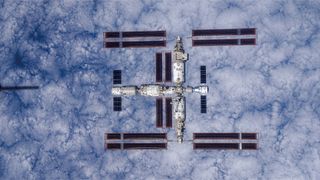
New chapter
“At long last we are entering a new chapter in our exploration of space, that of private space stations in different orbits, with different objectives,” said Jeffrey Manber, President, International and Space Stations for Voyager Space.
The group’s Starlab Space LLC is a global joint venture between Voyager Space, Airbus, Mitsubishi Corporation, and MDA Space. It’s a “no assembly required” venture to be hurled into orbit via a SpaceX Starship.
Manber told Space.com that the motivating factor for Starlab is the end of the International Space Station (ISS), due to be de-orbited in 2030.
“The ISS has already been in orbit for over two decades, well past its expected life-time,” Manber said. “As wonderful an orbiting station as it has been, it is well past its prime and like an old house, in increasing need of repairs.”
That dawn of private station stations has been bolstered by NASA and the U.S. Congress, said Manber, creating a pathway to assure a robust and cost-efficient space program in low-Earth orbit.
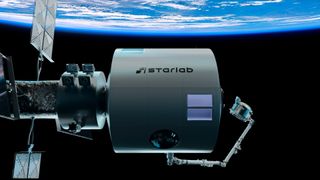
Customers wanted
To that end, NASA became a customer and two companies — Northrup Grumman and SpaceX were chosen to ferry cargo. NASA did the same for crew with the space agency now a customer of both SpaceX and Boeing’s Starliner to carry NASA astronauts.
“And now we are embarking on the third chapter,” said Manber, “NASA and other space agencies will be customers for space stations.”
Voyager Space and its Starlab facility received the largest NASA funding of any team, $217 million.
“But of course we need more, not only to build Starlab, but to sustain operations,” Manber added.
“We need customers, and our business model is designed to assure that space agencies world-wide are comfortable sending their astronauts to Starlab for research, to train for longer missions or for manufacturing,” said Manber.
Stakes are huge
A goal for the initiative has been to create a truly international space station, this time commercial, said Manber. Starlab is not solely an American venture. It is partly European, partly Japanese and partly Canadian, he said.
“At Voyager Space, and at Starlab, we are ready for the NASA down-select to what we believe will be two teams to move forward,” Manber said. “The stakes are huge.”
There is bi-partisan awareness, Manber continued, that there can be no space station gap, not with China’s very capable Tiangong already in orbit with advanced research and an international list of customers.”
Manber said he knows there are skeptics that space stations can be made sustainable. But he also recalls there were those skeptical of commercial cargo and later those of commercial crew. And those who fought to keep NASA’s space shuttle operational.
“I have no doubt that the business model of Starlab assures a sustainable path forward,” Manber concluded, “and one that can be a beacon of a new era of international commercial partnerships with crews from a dozen spacefaring nations.”
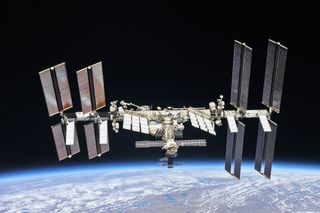
Challenges ahead
NASA faces several challenges to its budget, observes Scott Pace, director of George Washington University’s Space Policy Institute. He served as deputy assistant to the President and Executive Secretary of the White House National Space Council from 2017-2020.
NASA has a major budgetary challenge in trying to fund ISS utilization, the development of private platforms, de-orbiting the ISS, as well as pony up dollars for the space agency’s “re-booting” of the moon via its Artemis plans, Pace said.
“The Congress has made clear that it prioritizes the Artemis exploration missions. The ISS partners support ISS utilization. NASA Administrator Nelson has asked for emergency supplemental funding for a U.S. de-orbit vehicle,” advised Pace.
“The commercial platform developers will likely need more funding than has been appropriated so far,” Pace said, “so the question is how these competing demands will be managed.”
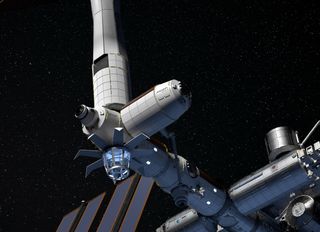
Vigilance on safety
The U.S. has said it intends to operate the ISS to 2030, with Europe, Japan, and Canada in agreement, said Pace. Meanwhile, Russia has stated it would commit only to 2028 and that it intends to put in place a separate Russian station, he said.
“However, these are plans, and it is less clear that the aging ISS will be able to safely operate through 2030. All the partners are practicing on-going vigilance on safety,” Pace added.
The United States is supporting, with milestone payment contracts, the development of private crew-tended platforms in a manner similar to the development of commercial crew, Pace pointed out.
“However, government requirements are less clear than they were for the commercial crew and cargo programs, and current payments — as a percent of total development costs — appear to be much less than was the case for commercial crew,” Pace said.
What’s the killer-app?
The key to “commercial” space stations is the market, said Marcia Smith, editor of the informative SpacePolicyOnline.com website.
“After 53 years of space stations, it’s still not evident what the market is,” Smith added. “The long wait for a ‘killer app’ that demonstrates the value of conducting research in microgravity continues.”
The Russians and SpaceX have shown there’s a market for orbital tourism, but how profitable it is — if at all — is a mystery since the costs and prices aren’t disclosed,” Smith said.
Eye of the beholder
“It seems pretty clear that for the foreseeable future commercial space stations, like commercial cargo and commercial crew, will rely on the government not only to help pay for initial investments, but long term services,” said Smith. “Whether or not that’s ‘commercial’ is in the eye of the beholder.”
As for the U.S. government, it clearly does not want to give up its foothold in low Earth orbit, Smith said, and leave China as the only country with a space station.
“It’s tempting to say Congress and the Administration — whoever is President – will never let there be a space station gap. But then again there was a gap between Apollo and the space shuttle, and between shuttle and commercial crew, so it’s not possible to say that with certainty,” Smith said.










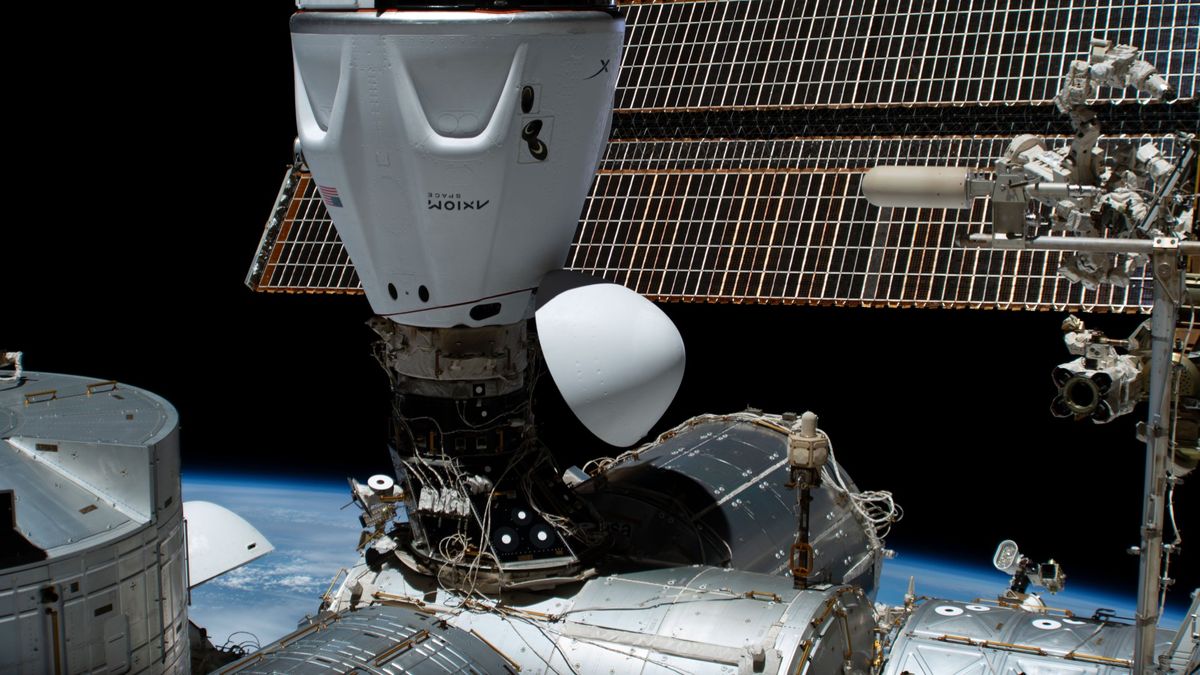
/https://tf-cmsv2-smithsonianmag-media.s3.amazonaws.com/filer_public/34/31/3431771d-41e2-4f97-aed2-c5f1df5295da/gettyimages-1441066266_web.jpg)







Discussion about this post